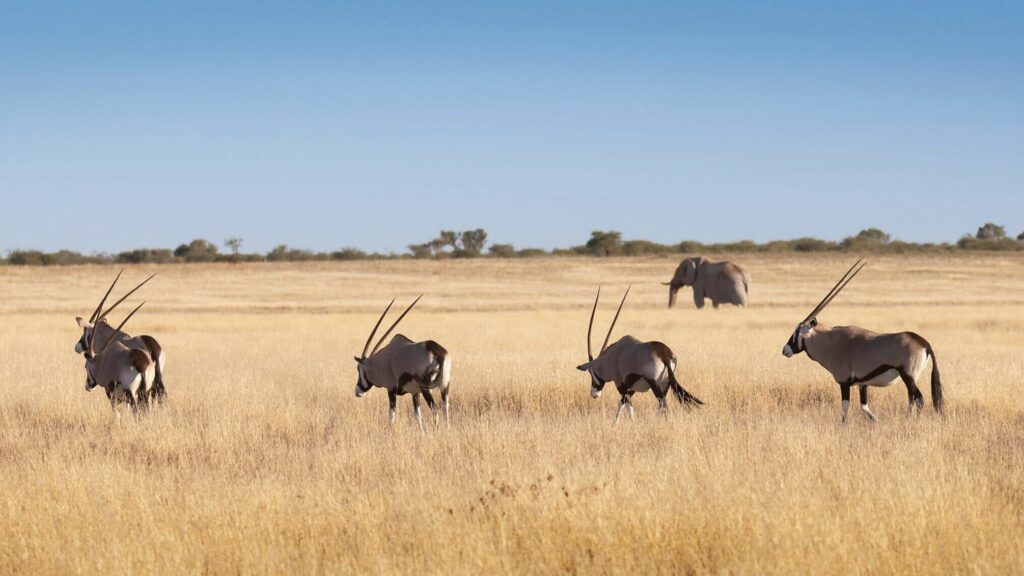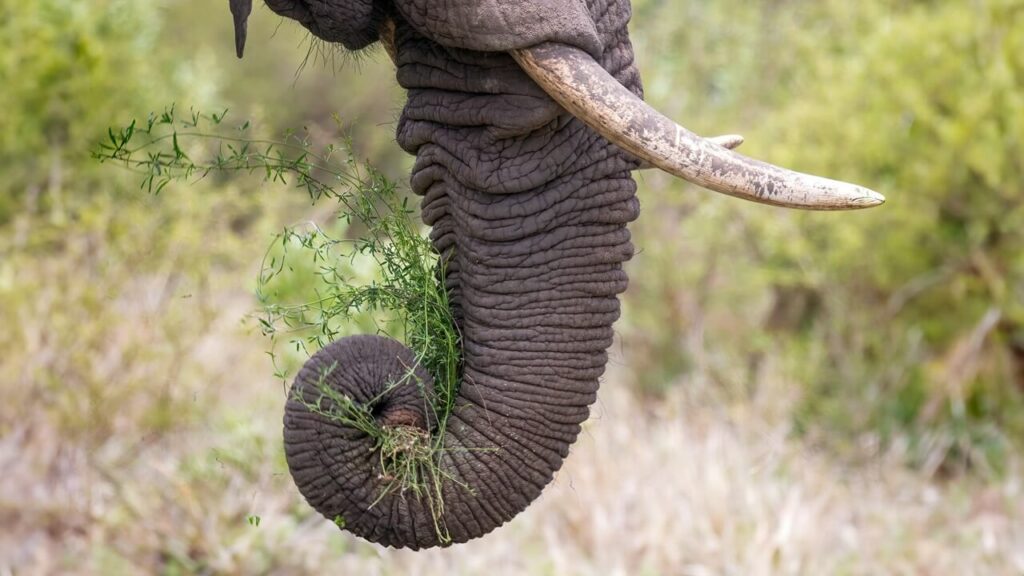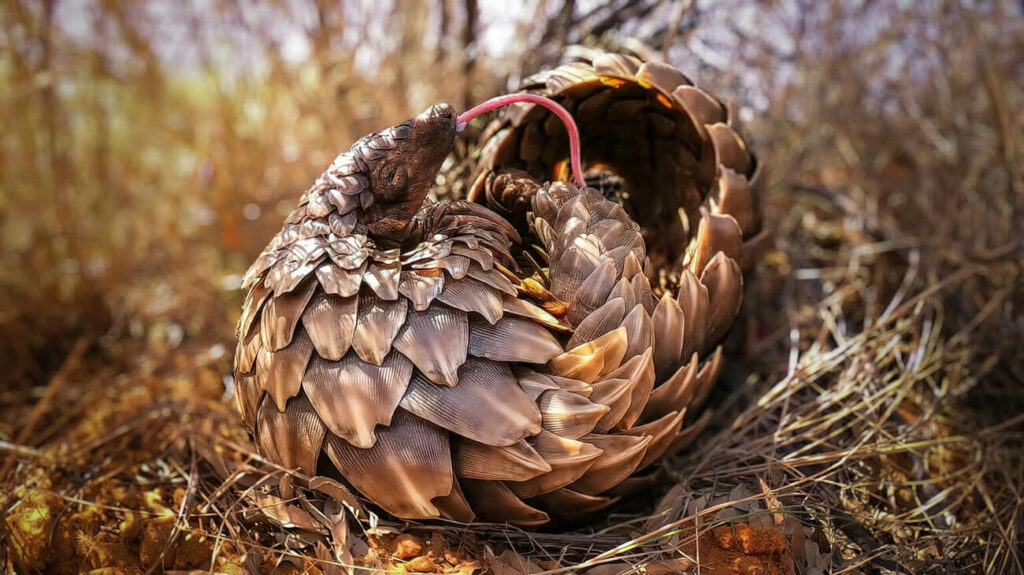White Rhino vs Black Rhino: How to Tell Them Apart & Help Protect Them
White Rhino vs Black Rhino: Understanding the Key Differences
Tracking the Differences: Rhino Footprints
When looking at white rhino vs black rhino, it’s important to know that they both fall under the order Perissodactyla, classifying them as odd-toed ungulates. As such, both species present easily discernible spoor distinguishing them from other large-footed species. The rhinos’ toes feature the largest one positioned at the front, flanked by two slightly smaller ones on the sides.
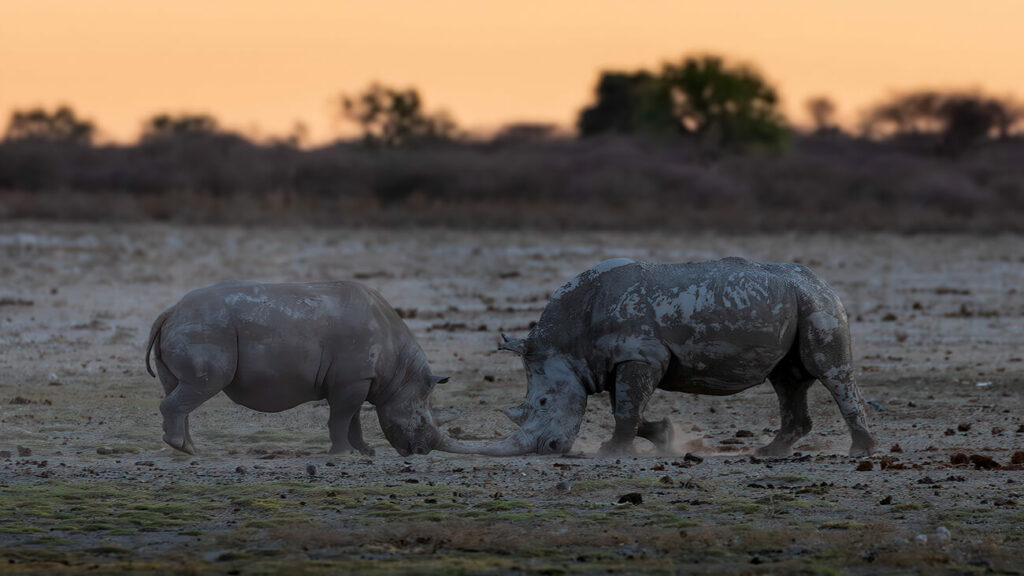
The general configuration of the foot of both rhino species is relatively similar in younger individuals however, white rhinos have a distinctive feature in the rear foot pad which forms a prominent and rounded. While this “W” can sometimes also be seen in the spoor of the black rhino may, the general footprint shape remains rounded. Coupled with the smaller side toes, it becomes easy to differentiate between the two species. Adult white rhino is even easier to identify as the size of the foot exceeds that of any black rhino.
Body Build: Grazer vs. Browser
Primarily, the square-lipped white rhinoceros surpasses its hook-lipped black rhino counterpart in terms of size, exhibiting a significant size discrepancy. A female white rhino typically weighs around 1,700 kg, while the male can reach approximately 2,300 kg. In contrast, the weight of a black rhino ranges between 800 and 1,400 kg. This significant difference in weight paired with variations in body shape, horn length, sensory strategy, and dietary preferences distinguishes them from one another, allowing us to develop a deeper appreciation for each species’ uniqueness.
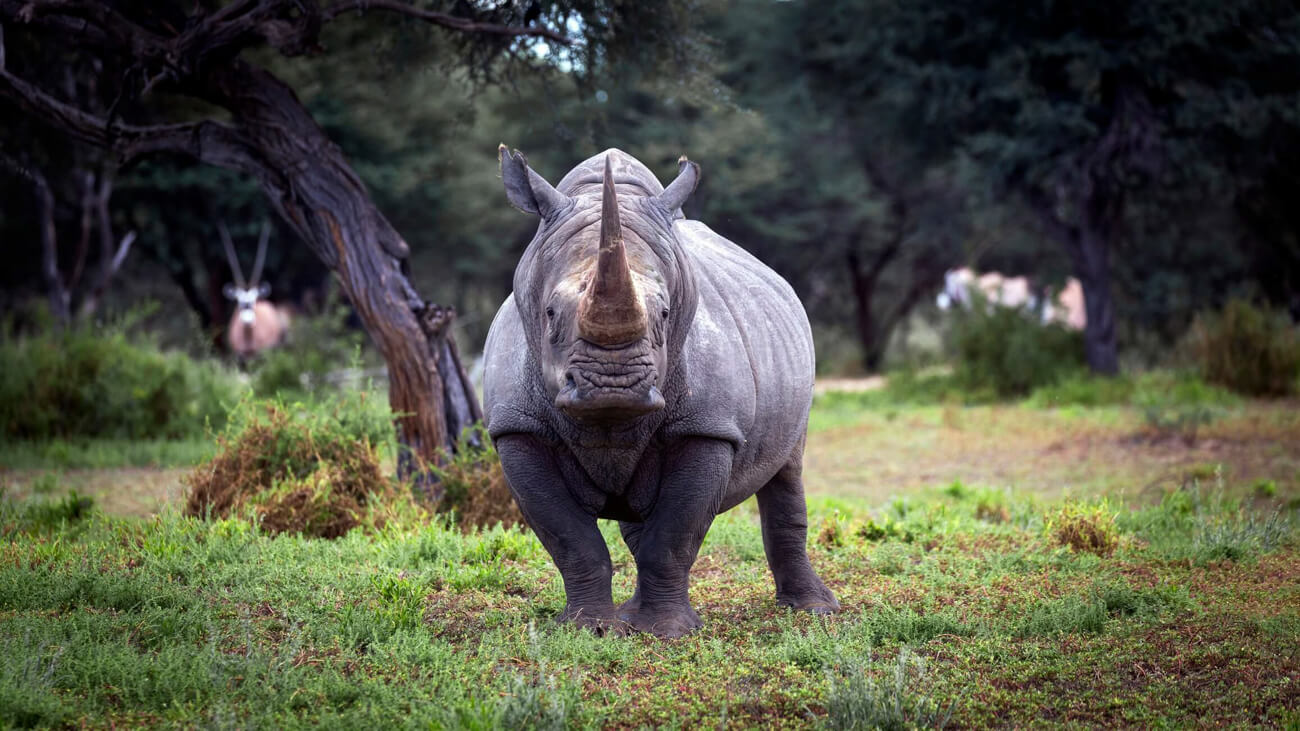
Mouths Designed for Diet
White Rhino vs Black Rhino differences extend to their mouth and dietary preferences suited to the biomes they inhabit. The white rhinoceros boasts a broad, flat, and wide lip, a fitting adaptation for its grazing habits. This design facilitates efficient gripping and tearing of grass. In contrast, the black rhino adopts a browsing lifestyle, consuming leaves, shoots, and branches. Consequently, the black rhino possesses a prehensile, pointed lip adapted for grasping leaves and branches. These differences significantly impact their feeding, contributing to recognizable adaptations that make them unique.
The difference in dietary preferences between white rhino vs black rhino directly impacts their body structure and posture. The white rhinoceros exhibits a sizeable hump positioned above its neck, to support a heavy low-hanging head grazing the grass. In contrast, the black rhino lacks this hump and therefore, has a more pronounced arch in its back, giving it a shorter and more compact build. The contrasting diets of these species further contribute to variations in body structure, with the white rhino having a prolonged face and small eyes due to this a grazing inclination. In contrast, the black rhino’s ability for browsing results in a prominent, muscular neck that allows for a more efficient browsing posture.
Ears and Eyes: Sensing Their World
The rhinos’ ears’ size and shape are notably different when comparing white rhino vs black rhino. The white rhinoceros is characterized by poor eyesight (black rhinos are believed to have better eyesight) and constantly having its head down, relies significantly on its ears’ sensory awareness and safety. Therefore, it features longer more tubular ears that act as sound funnels. Both animals can swivel their ears independently and can keep an ear pointed in a direction should it detect any uncertainty. While the black rhino’s ears are notably smaller and rounder in shape, they are hairier than those of a white rhino.
Horns: Symbols of Power and Identity
The rhinos’ horns exhibit a considerable variation in length and shape when comparing white rhino vs black rhino. The white rhino typically possesses a longer front horn, coupled with a significantly shorter second horn. The longer and wider face means that white rhinos tent to have thicker and heavier built horns. Conversely, the black rhino tends to exhibit a front horn that is sometimes tall and thin (needle-like) but often broken down to a short, with a longer second horn compared to the white rhino. This sometimes results in black rhinos having two similar sized horns.
Where Rhinos Thrive
The habitat preferences for white rhino vs black rhino contribute to their distinct ecological niches. White rhinos are commonly spotted in grasslands or open areas, where their grazing habits are well-suited to consume large quantities of grass. On the other hand, black rhinos thrive in thickets and dense brush, aligning with their browsing lifestyle and ability to feed on leaves, shoots, and branches. These different ecological habitats favor each species based on their specific feeding habits, highlighting the important relationship between their habitat preferences and dietary adaptations.
Temperament: Exploring Rhino Personalities
Arguably the biggest difference between when talking about white rhino vs black rhino is that black rhinos are typically more assertive and inquisitive than their white counterpart, which is generally more tranquil. However, habitat can play some role in shaping rhinos’ behavior. Encounters with black rhino are more likely to occur at closer quarters, given their preferred habitat than if one were to observe a white rhino from a distance in an open grassland. Animals tend to exhibit more defensive and aggressive behaviors within their comfort zones, and proximity often intensifies reactions.
Consequently, close encounters with irritable black rhinos appear to be more frequent than with their white counterparts. However, there is no denying that habitat aside, black rhinos tend to be more inquisitive and receptive to charging anything unfamiliar to them.
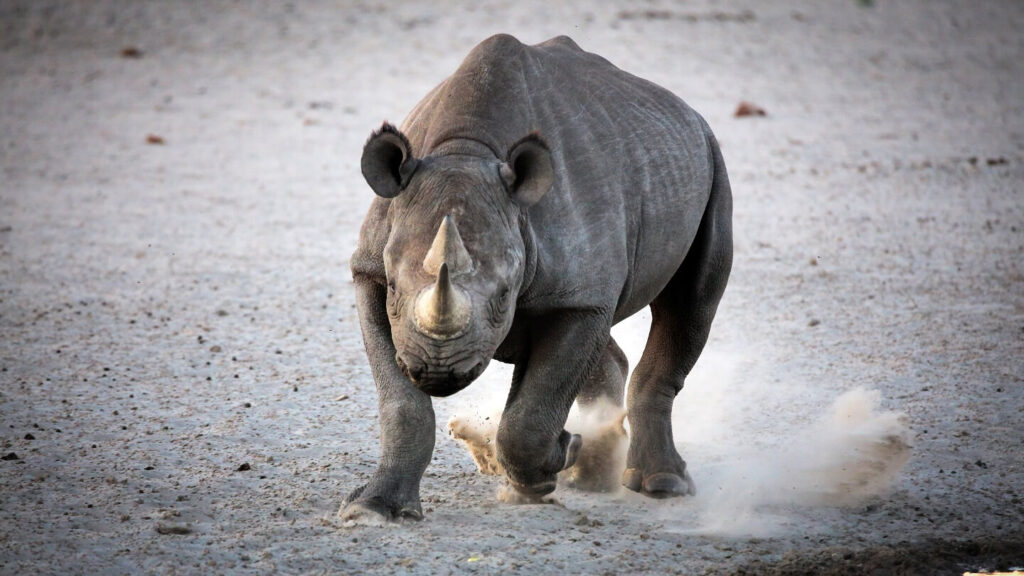
White rhinos tend to flee when faced with uncertainty, curling their longer tails like a pig as they trot off in the opposite direction of the threat. Black rhino, conversely, have a shorter tail that stands upright, like a warthog, as they run. When accompanied by a calf, white rhino cows tend to walk behind their calf often guiding them with their horns. Black rhino cows tend to walk in front of their calf, presumably to open denser vegetation. Interestingly, for both species, these roles are often reversed when fleeing danger compared to walking.
Putting threats aside, let’s look at white rhino vs black rhino in terms of social behavior. White rhinos are known to be more sociable, often found in crashes, while black rhinos show a tendency to be more solitary. However, black rhinos have been known to gather at waterholes, particularly at night, where they greet and interact with one another.
Telling Them Apart: Dung Clues
White rhino vs black rhino dung comparison is an essential tool in distinguishing black and white rhinos. White rhinos’ dung is dark and made up mostly of poorly digested grass. Black rhinos excrete dung that contains a lot of twigs and branches due to their diet. These trigs are noticeably cut at a 45-degree angle with the dung being brown in colour.
